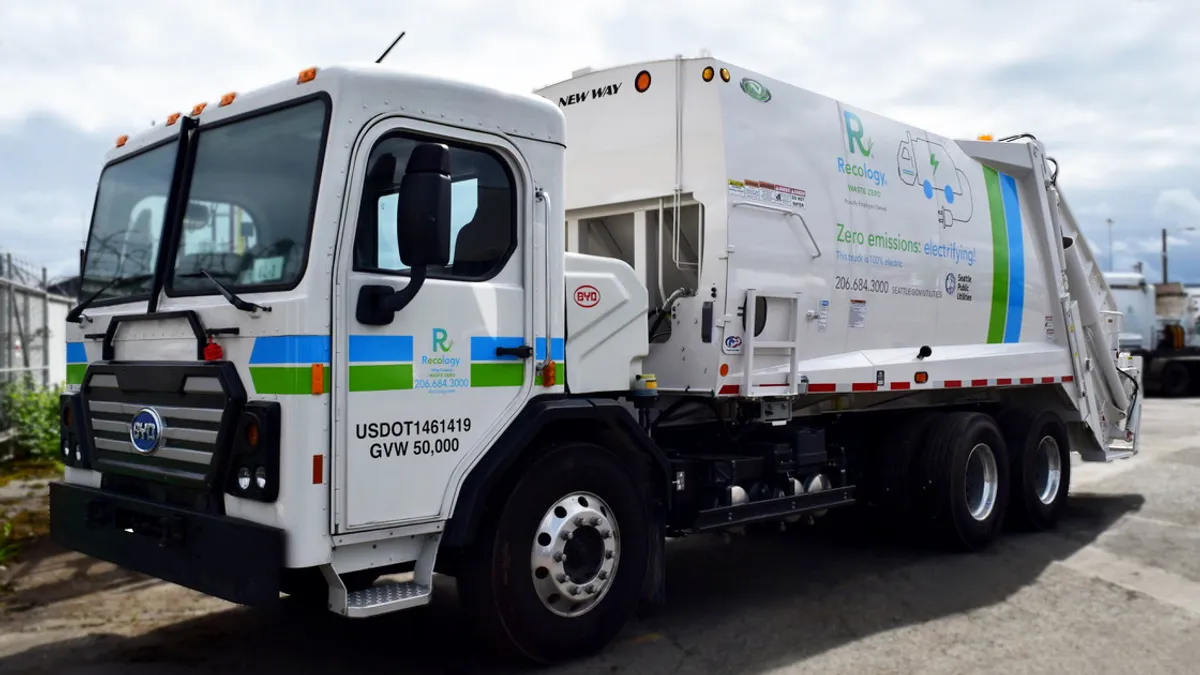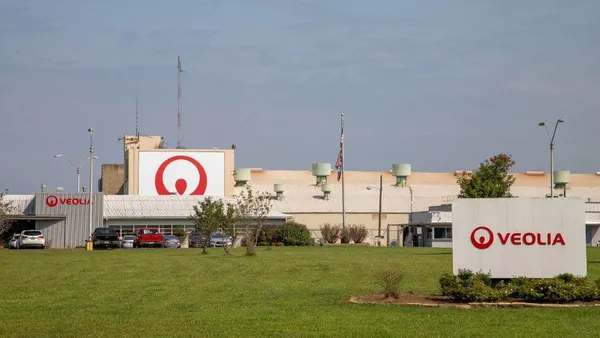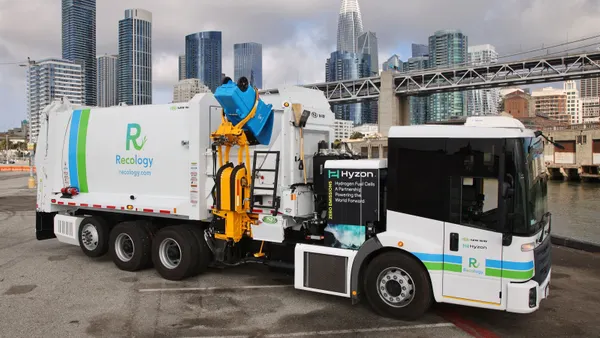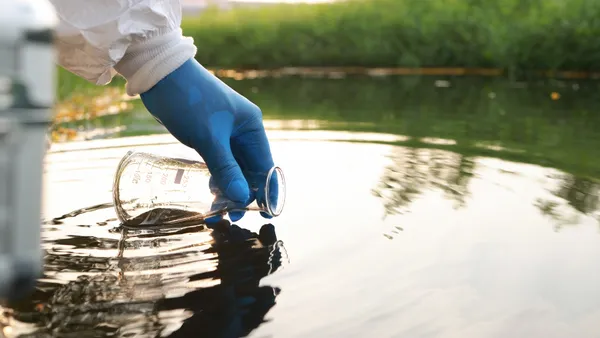Dive Brief:
- California-based Recology achieved its goal to power 90% of its more than 2,600 vehicles through renewable or alternative fuels in 2022, the waste company revealed in its sustainability report published this week.
- The report, which covers the 2022 fiscal year, also revealed that Recology's facilities ran on 90% renewable or carbon-free electricity and 50% of the landfill gas it collected at its two active landfills was used to generate renewable electricity.
- The company plans to boost the latter two levels by 2028, achieving 100% renewable or carbon-free power at its facilities and 75% gas to renewable electricity over the next five years.
Dive Insight:
This is the fourth sustainability report from the employee-owned company, which operates in California, Washington and Oregon.
To achieve its fleet fueling goal, the company became "increasingly reliant on renewable diesel and renewable natural gas," it said in its report. The shift reduced emissions by 44% in three years, according to Recology.
“As a leader in resource recovery, Recology has always been focused on sustainability,” CEO Sal Coniglio said in a statement. “While we work to reduce our carbon footprint, we remain dedicated to providing superior customer service, supporting our diverse employee-owners, and adhering to the highest standards of business ethics and corporate responsibility.”
Recology’s fleet shift occurs ahead of major vehicle market changes led by California and adopted by other states. The state’s Advanced Clean Trucks and Advanced Clean Fleets rules will require all waste fleet owners to buy solely zero-emission vehicles by 2042, causing consternation for fleet owners who haven’t begun transitioning to the still nascent battery-electric vehicles available in the waste industry.
Recology's experience with electric trucks dates back to 2016, when it first began using two 100% electric support vehicles. In 2022 and 2023, it's partnered with Heil and Mack to pilot a fully electric automated side loader truck body and an electric side loader, respectively. The company today operates two heavy-duty EVs, two medium-duty EVs, 10 electric support vehicles, five heavy duty electric hybrids, and 13 electric hybrid support vehicles, according to the report.
The company also brought down its overall emissions year over year. In 2022, Recology's total scope 1 emissions declined just under 10% year over year, much of which was due to fossil fuel emissions from vehicle fuels declining by nearly a third. Its total scope 2 emissions fell more than 35%, reflecting an immediate impact from reducing emissions from electricity use.
Emissions from stationary combustion, which includes landfill flaring, natural gas usage at facilities and fossil fuels used in stationary assets, fell by about 32%. Recology has installed gas extraction wells at both of its active landfills. Currently, it converts 50% of the gas collected into electricity, generating 41,642 megawatt-hours of in 2022.
But landfill gas was responsible for 85% of Recology's total greenhouse gas emissions in 2022, which is why the company is focusing on finding ways to increase the amount of gas it routes to beneficial use rather than flaring. To do so, the company said it would continue to invest in recovery infrastructure to reroute organics and seek to address fugitive emissions.
Recology has been partnering with California municipalities to help them comply with SB 1383, which mandates organics collection. The company brought in nearly 4,000 new organics collection customers in California in 2022, increasing the organic material recovered at Recology's composting facilities in the state by 14%.
In total, Recology composted more than 684,000 tons of organics in 2022 across its eight facilities. It continues to invest in the facilities, including by installing a mass bed aerated static pile system at its North Plains, Oregon, facility, adding 30,000 tons of annual capacity.
The company's recycling efforts also continue. Recology recovered 15,817 tons of plastic and 508,904 tons of recyclable material overall in 2022. The company operates 12 MRFs, and has invested $60 million over the last five years to install robotic sorters, optical sorters and other technology to improve their operations.















